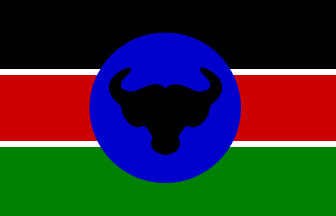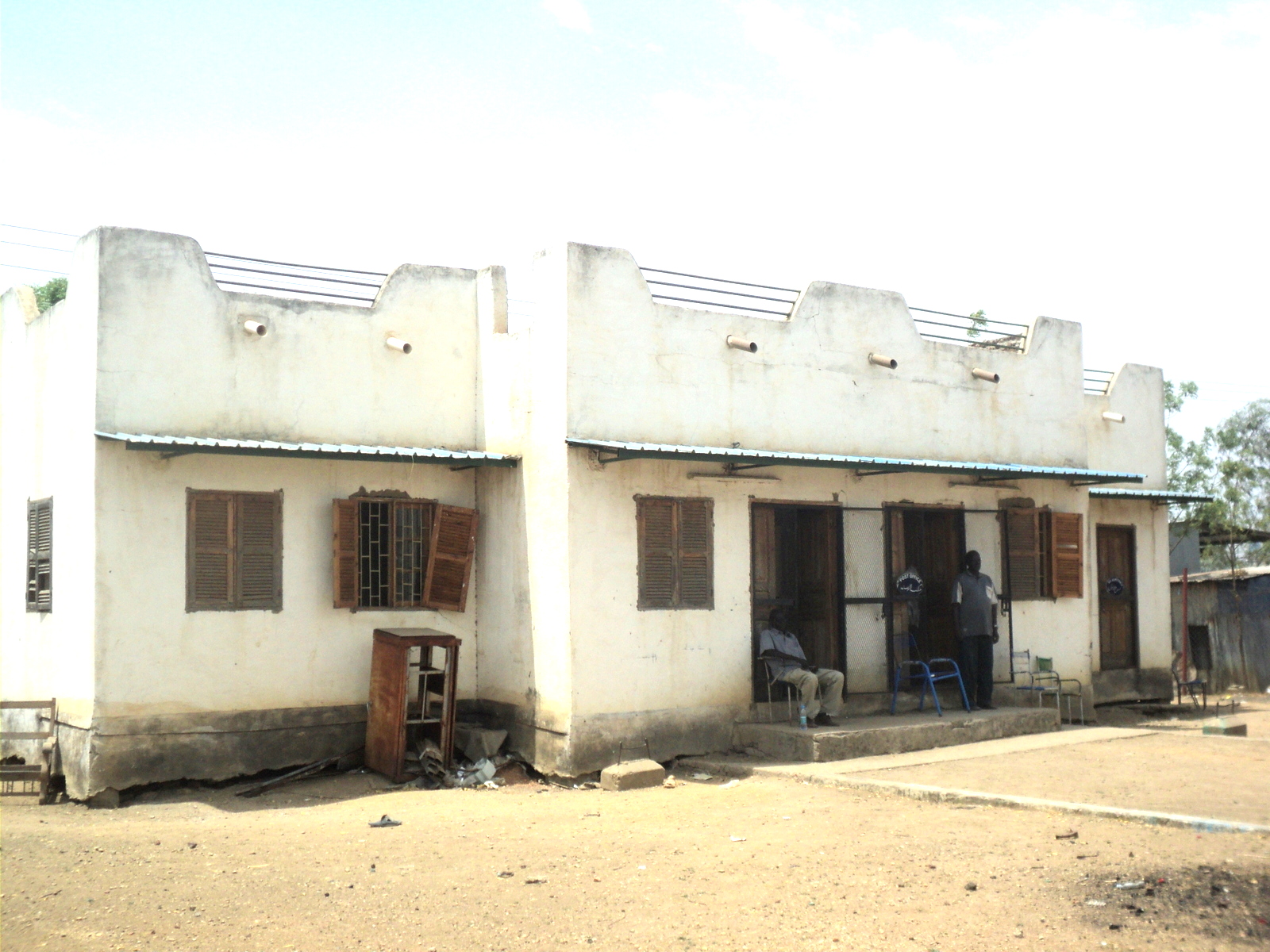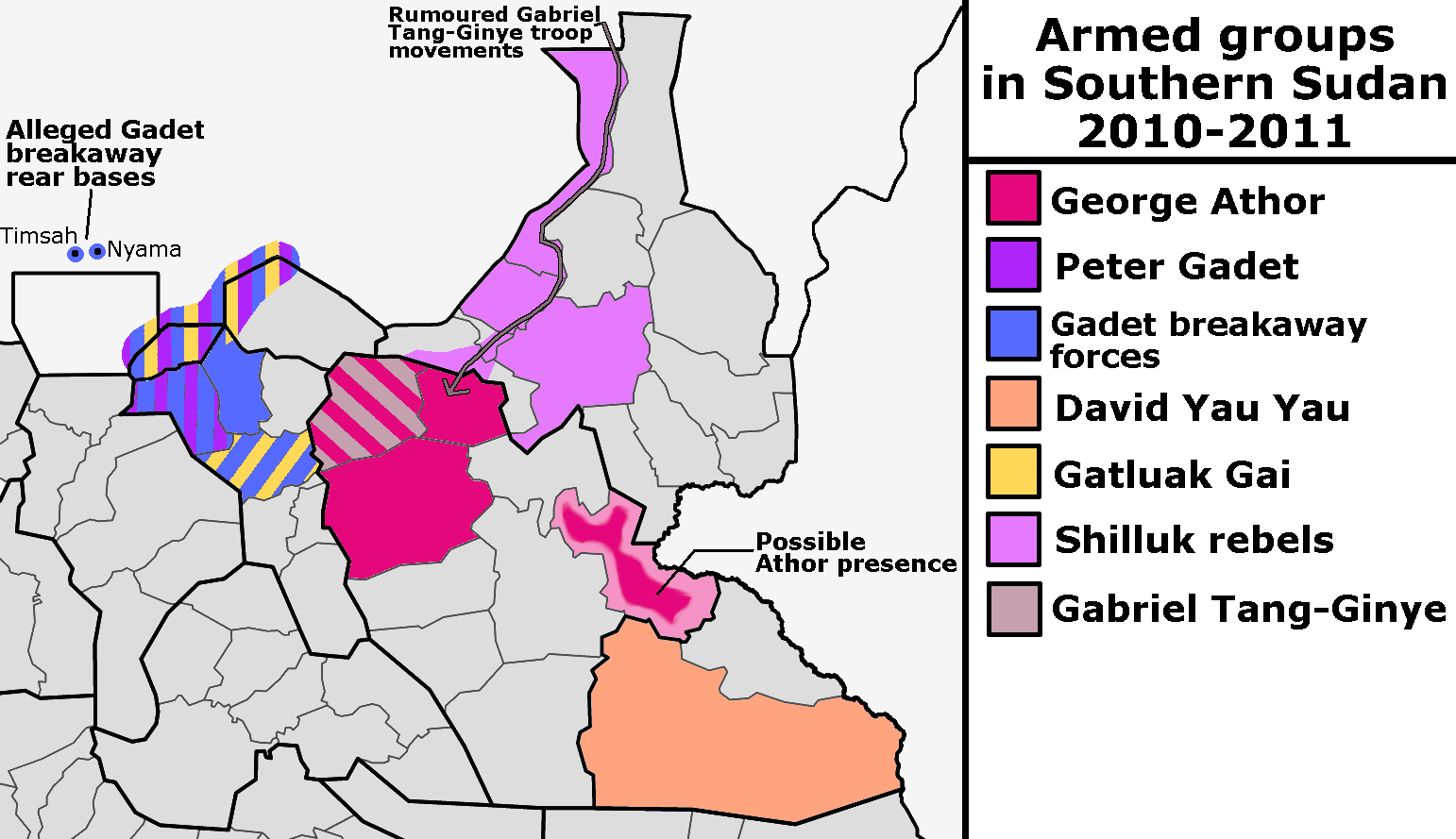|
Battle Of Malakal
The Battle of Malakal occurred at the end of November 2006 in the southern Sudanese town of Malakal. The clashes between Sudanese government forces and the Sudan People's Liberation Army were the most serious breach of a 2005 deal to end the Second Sudanese Civil War."Hundreds killed in south Sudan clashes: ex-officer" Reuters, November 30, 2006. Battle According to the SPLA, militia leader initiated the clashes by attacking the SPLA and then taking refuge in the local Sudanese Army base. After a demand to hand over Tang was not met, the SPLA attacked the base, causing the Sudanese army to counterattack with tanks. The Sudanes ...[...More Info...] [...Related Items...] OR: [Wikipedia] [Google] [Baidu] |
Second Sudanese Civil War
The Second Sudanese Civil War was a conflict from 1983 to 2005 between the central Sudanese government and the Sudan People's Liberation Army. It was largely a continuation of the First Sudanese Civil War of 1955 to 1972. Although it originated in southern Sudan, the civil war spread to the Nuba mountains and the Blue Nile. It lasted for 22 years and is one of the longest civil wars on record. The war resulted in the independence of South Sudan six years after the war ended. Roughly two million people died as a result of war, famine and disease caused by the conflict. Four million people in southern Sudan were displaced at least once (and normally repeatedly) during the war. The civilian death toll is one of the highest of any war since World War II and was marked by numerous human rights violations, including slavery and mass killings. Background and causes The Sudanese war is often characterized as a fight between the central government expanding and dominating peoples ... [...More Info...] [...Related Items...] OR: [Wikipedia] [Google] [Baidu] |
Malakal
Malakal is a city in South Sudan. It is the capital of Upper Nile State, South Sudan, along the White Nile River. It also serves as the headquarter of Malakal county and it used to be the headquarter of Upper Nile Region from 1970s to late 1990s. Geography The city of Malakal is located along the White Nile, in upper Nile state, South Sudan, close to the International borders with the Republic of Sudan and with Ethiopia.BritannicaJuba britannica.com, USA, accessed on July 7, 2019 The town is located on the banks of the White Nile, just north of its confluence with the Sobat River. This location lies approximately , by road, directly north of Juba, the capital of South Sudan and the largest city in that county. History Historically, Malakal was known as the former Sobat District which was then divided into Balliet and Akoka counties in the Eastern Bank of White Nile and Northern Sobat River. The Malakal town started as a tiny District administrative unit which later expanded i ... [...More Info...] [...Related Items...] OR: [Wikipedia] [Google] [Baidu] |
Southern Sudan Autonomous Region (2005–11) , established at the end of the Second Sudanese Civil War
{{disambig ...
Southern Sudan autonomous region may refer to: *Southern Sudan autonomous region (1972–1983), during the period of autonomy at the end of the First Sudanese Civil War *Southern Sudan autonomous region (2005–2011) Southern Sudan autonomous region may refer to: *Southern Sudan autonomous region (1972–1983), during the period of autonomy at the end of the First Sudanese Civil War *Southern Sudan autonomous region (2005–2011) Southern Sudan autonomous regio ... [...More Info...] [...Related Items...] OR: [Wikipedia] [Google] [Baidu] |
Sudan
Sudan ( or ; ar, السودان, as-Sūdān, officially the Republic of the Sudan ( ar, جمهورية السودان, link=no, Jumhūriyyat as-Sūdān), is a country in Northeast Africa. It shares borders with the Central African Republic to the southwest, Chad to the west, Egypt to the north, Eritrea to the northeast, Ethiopia to the southeast, Libya to the northwest, South Sudan to the south and the Red Sea. It has a population of 45.70 million people as of 2022 and occupies 1,886,068 square kilometres (728,215 square miles), making it Africa's List of African countries by area, third-largest country by area, and the third-largest by area in the Arab League. It was the largest country by area in Africa and the Arab League until the 2011 South Sudanese independence referendum, secession of South Sudan in 2011, since which both titles have been held by Algeria. Its Capital city, capital is Khartoum and its most populated city is Omdurman (part of the metropolitan area of Khar ... [...More Info...] [...Related Items...] OR: [Wikipedia] [Google] [Baidu] |
South Sudan Defence Forces
The South Sudan People's Defence Forces (SSPDF), formerly the Sudan People's Liberation Army (SPLA), is the army of the Republic of South Sudan. The SPLA was founded as a guerrilla movement against the government of Sudan in 1983 and was a key participant of the Second Sudanese Civil War, led by John Garang. After Garang's death in 2005, Salva Kiir was named the SPLA's new Commander-in-Chief. As of 2010, the SPLA was divided into divisions of 10,000–14,000 soldiers. Following the Comprehensive Peace Agreement in 2005, the last remaining large and well-equipped militia, the South Sudan Defence Forces (SSDF), under General Paulino Matiep, signed an agreement with Kiir known as the Juba Declaration, which amalgamated the two forces under the SPLA banner. Following South Sudan's independence in 2011, Kiir became President and the SPLA became the new republic's regular army. In May 2017 there was a restructure and the SPLA took on the name of South Sudan Defence Forces ... [...More Info...] [...Related Items...] OR: [Wikipedia] [Google] [Baidu] |
Sudan People's Liberation Army
The South Sudan People's Defence Forces (SSPDF), formerly the Sudan People's Liberation Army (SPLA), is the army of the South Sudan, Republic of South Sudan. The SPLA was founded as a guerrilla movement against the government of Sudan in 1983 and was a key participant of the Second Sudanese Civil War, led by John Garang. After Garang's death in 2005, Salva Kiir was named the SPLA's new Commander-in-Chief. As of 2010, the SPLA was divided into Division (military), divisions of 10,000–14,000 soldiers. Following the Comprehensive Peace Agreement in 2005, the last remaining large and well-equipped militia, the South Sudan Defence Forces (militia), South Sudan Defence Forces (SSDF), under General Paulino Matiep, signed an agreement with Kiir known as the Juba Declaration, which amalgamated the two forces under the SPLA banner. Following South Sudan's independence in 2011, Kiir became President and the SPLA became the new republic's regular army. In May 2017 there was a restruct ... [...More Info...] [...Related Items...] OR: [Wikipedia] [Google] [Baidu] |
Gabriel Tang
Gabriel Gatwech Chan (1960 – 5 January 2017), more commonly known by the nickname Tang-Ginye or Tanginye meaning "long pipe", was a Nuer and a commander in various primarily Nuer rebel militias in South Sudan. General Tanginye led a southern border militia allied to the Khartoum government during Sudan's civil war. Members of the Sudanese armed forces loyal to Tanginye in Malakal clashed with the Sudan People's Liberation Army (SPLA) in 2006, killing about 150 people, and in 2009 in breach of the peace deal. In April 2011, clashes between his militia and the SPLA in the state of Jonglei killed at least 57 according to government officials. Shortly thereafter, Tanginye surrendered to SPLA forces and was placed under house arrest in Juba awaiting charges against him. During the South Sudanese Civil War, he allied with the SPLA-IO and later Lam Akol's militia, a Juba linked rebel group called the National Democratic Movement (NDM) and became its chief of staff. In January ... [...More Info...] [...Related Items...] OR: [Wikipedia] [Google] [Baidu] |
Jonglei
Jonglei State is a state of South Sudan with Bor as its centre of government and the biggest city. Jonglei state comprises nine counties: Bor, Akobo, Ayod, Uror, Duk, Nyirol, Pigi, Twic East, and Fangak. Jonglei State is the largest state by area before reorganisation, with an area of approximately 122,581 km2, as well as the most populous according to the 2008 census conducted in present-day South Sudan's second period of autonomy. The boundaries of the state were again changed as a result of a peace agreement signed on 22 February 2020. In the 21st century, Jonglei State has been marred in ethnic clashes which the UNMISS estimated in May 2012 had affected the lives of over 140,000 people, and has been heavily magnified by the broader South Sudanese conflict since December 2013. Notable people *Awer Mabil, South Sudanese-Australian footballer *Adut Akech, South Sudanese-Australian model. *Thomas Deng, South Sudanese-Australian footballer Administrative divisio ... [...More Info...] [...Related Items...] OR: [Wikipedia] [Google] [Baidu] |
South Sudanese Independence Referendum, 2011
A referendum took place in Southern Sudan from 9 to 15 January 2011, on whether the region should remain a part of Sudan or become independent. The referendum was one of the consequences of the 2005 Naivasha Agreement between the Khartoum central government and the Sudan People's Liberation Army/Movement (SPLA/M). A simultaneous referendum was supposed to be held in Abyei on whether to become part of South Sudan but it was postponed due to conflict over demarcation and residency rights. On 7 February 2011, the referendum commission published the final results, with a landslide majority of 98.83% voting in favour of independence. While the ballots were suspended in 10 of the 79 counties for exceeding 100% of the voter turnout, the number of votes was still well over the requirement of 60% turnout, and the majority vote for secession is not in question. The predetermined date for the creation of an independent state was 9 July 2011. Background The prerequisites for the refere ... [...More Info...] [...Related Items...] OR: [Wikipedia] [Google] [Baidu] |
Comprehensive Peace Agreement
The Comprehensive Peace Agreement (CPA, ar, اتفاقية السلام الشامل, Ittifāqiyyah al-salām al-šāmil), also known as the Naivasha Agreement, was an accord signed on January 9, 2005, by the Sudan People's Liberation Movement (SPLM) and the Government of Sudan. The CPA was meant to end the Second Sudanese Civil War, develop democratic governance countrywide, and share oil revenues. It also set a timetable for a Southern Sudanese independence referendum. The peace process was encouraged by the Intergovernmental Authority on Development (IGAD), as well as IGAD-Partners, a consortium of donor countries. Components The process resulted in the following agreements (also referred to as protocols): * The Machakos Protocol (or Chapter I), signed in Machakos, Kenya on 20 July 2002. Agreement on broad principles of government and governance. * The Protocol on Power Sharing (or Chapter II), signed in Naivasha, Kenya on 26 May 2004 * The Agreement on Wealth Sha ... [...More Info...] [...Related Items...] OR: [Wikipedia] [Google] [Baidu] |
South Sudan
South Sudan (; din, Paguot Thudän), officially the Republic of South Sudan ( din, Paankɔc Cuëny Thudän), is a landlocked country in East Africa. It is bordered by Ethiopia, Sudan, Central African Republic, Democratic Republic of the Congo, Uganda and Kenya. Its population was estimated as 12,778,250 in 2019. Juba is the capital and largest city. It gained independence from Sudan on 9 July 2011, making it the most recent sovereign state or country with widespread recognition as of 2022. It includes the vast swamp region of the Sudd, formed by the White Nile and known locally as the '' Bahr al Jabal'', meaning "Mountain River". Sudan was occupied by Egypt under the Muhammad Ali dynasty and was governed as an Anglo-Egyptian condominium until Sudanese independence in 1956. Following the First Sudanese Civil War, the Southern Sudan Autonomous Region was formed in 1972 and lasted until 1983. A second Sudanese civil war soon broke out in 1983 and ended in 2005 with the ... [...More Info...] [...Related Items...] OR: [Wikipedia] [Google] [Baidu] |
Health In Sudan
Sudan is still one of the largest countries in Africa even after the split of the Northern and Southern parts. It is one of the most densely populated countries in the region and is home to over 37.9 million people. Sudan is a young population country with the median age 19.6 years. The total life expectancy for male and female at birth was estimated around 62 and 66 years respectively, and this is considered the average of least developed countries. The under-five child mortality rate was 77/1000 in 2015 compared to 128/1000 in 1990 and the maternal mortality ratio was 360/100,000 in 2015 compared to 720/100,000 in 1990. Sudan has a high incidence of debilitating and sometimes fatal diseases, the persistence of which reflects difficult ecological conditions, high levels of malnutrition, an inadequate health-care system, and conflict and violence. Sudan is also susceptible to non-communicable diseases, natural and manmade disasters. Drought, flood, internal conflicts, and outbreaks ... [...More Info...] [...Related Items...] OR: [Wikipedia] [Google] [Baidu] |




